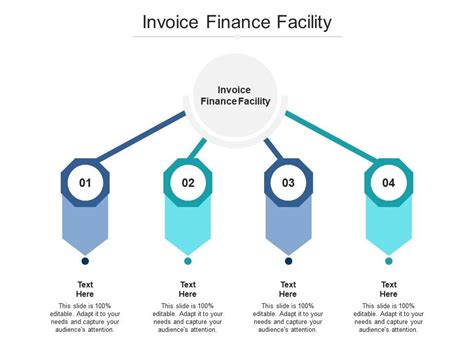Berikut adalah artikel blog tentang Fasilitas Pembiayaan Piutang:
Invoice Finance Facility: A Comprehensive Guide
Invoice finance, also known as accounts receivable financing, is a valuable tool for businesses seeking to improve their cash flow. It allows companies to receive immediate payment for outstanding invoices, reducing reliance on traditional financing methods and accelerating growth. This comprehensive guide will delve into the specifics of invoice finance facilities, outlining their benefits, types, and how to determine if they're right for your business.
What is Invoice Finance?
Invoice finance is a type of financing that uses your outstanding invoices (accounts receivable) as collateral. Essentially, you sell your invoices to a lender – a factoring company or invoice finance provider – who then advances you a percentage of the invoice value upfront. Once your customers pay the invoices, the lender receives the full payment and keeps their agreed-upon percentage as a fee. The remainder is then returned to your business.
Types of Invoice Finance Facilities
Several types of invoice finance facilities cater to different business needs:
-
Invoice Factoring: This involves selling your invoices to a factoring company, who then collects the payments from your customers. This is usually the most common type of invoice finance and often comes with a lower upfront cost. There are two variations: recourse factoring (where you are responsible for unpaid invoices) and non-recourse factoring (where the factoring company bears the risk of non-payment).
-
Invoice Discounting: Similar to factoring, but your business maintains control over the collection of payments. You simply discount the invoice value to receive a faster payment. This is generally a more discreet approach.
-
Reverse Factoring: In this model, your business's suppliers are paid directly by the finance provider, thereby improving your supplier relationships and credit terms.
-
Invoice Lending: You borrow money against a pool of invoices. You retain control of the collection process and are typically charged interest on the amount borrowed.
Benefits of Invoice Finance
-
Improved Cash Flow: The most significant benefit is the immediate injection of cash, enabling you to meet immediate operational expenses, invest in growth, and take advantage of business opportunities.
-
Reduced Debt Reliance: Invoice finance can lessen your reliance on traditional loans, particularly when creditworthiness is limited.
-
Faster Payment Cycles: Expedites the payment process, helping to maintain a positive relationship with clients.
-
Scalability: Invoice finance allows businesses to scale operations as sales increase without jeopardizing cash flow.
-
Improved Working Capital: Improves working capital management, allowing more efficient allocation of funds.
How to Determine if Invoice Finance is Right for You
Several factors determine the suitability of invoice finance for your business:
-
Sales Volume: A higher volume of invoices generally leads to more efficient utilization of the facility.
-
Creditworthiness of Customers: Providers assess the creditworthiness of your customers to assess the risk.
-
Industry: Some industries are more suited to invoice finance than others due to factors like payment terms and industry norms.
-
Business Size and Structure: The size and structure of your business will determine which type of facility is the most appropriate.
Conclusion
Invoice finance can be a game-changer for businesses looking to optimize their cash flow and accelerate growth. Understanding the different types of invoice finance facilities and carefully evaluating your business's needs is crucial to selecting the right option. By leveraging this financial tool effectively, businesses can achieve greater financial stability and sustainable growth. Always consult with financial professionals to determine the best approach for your specific circumstances.
